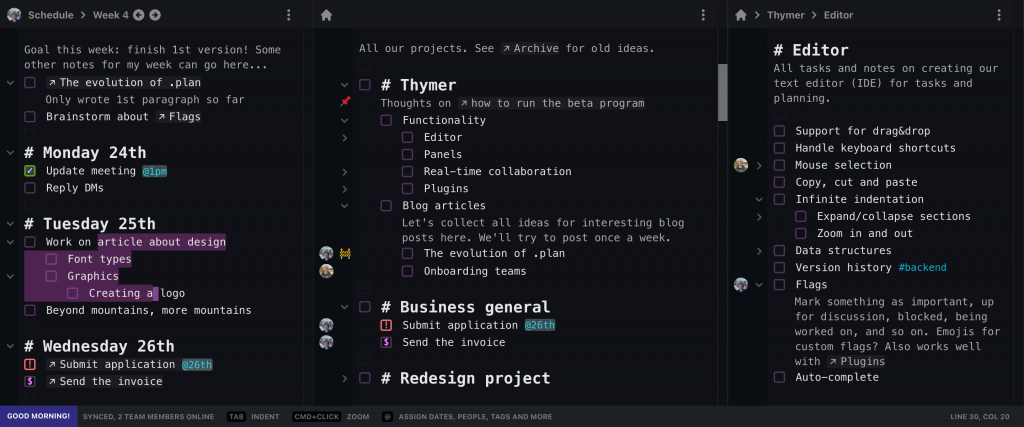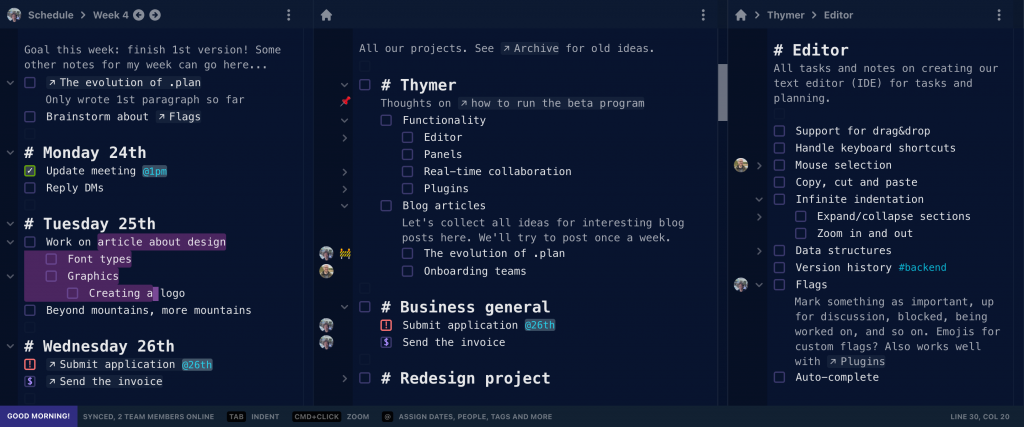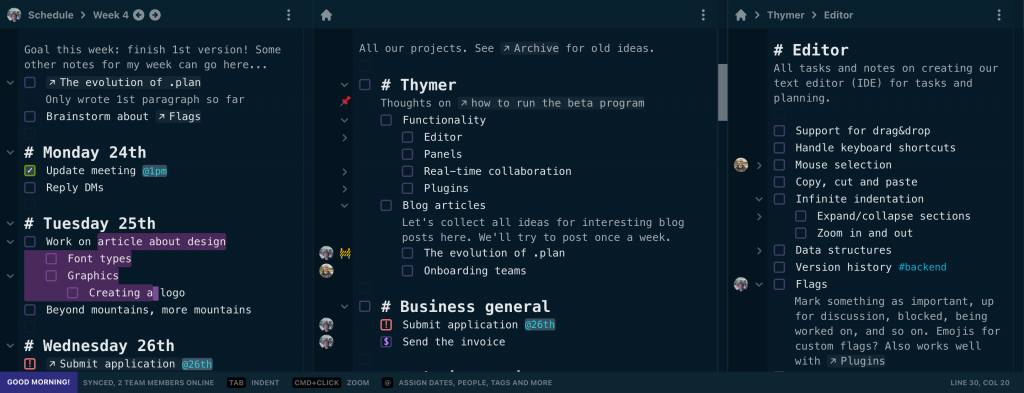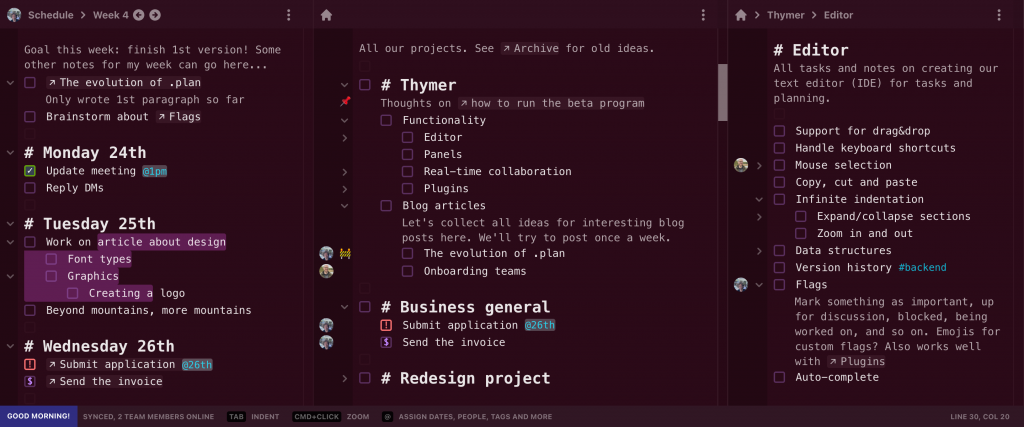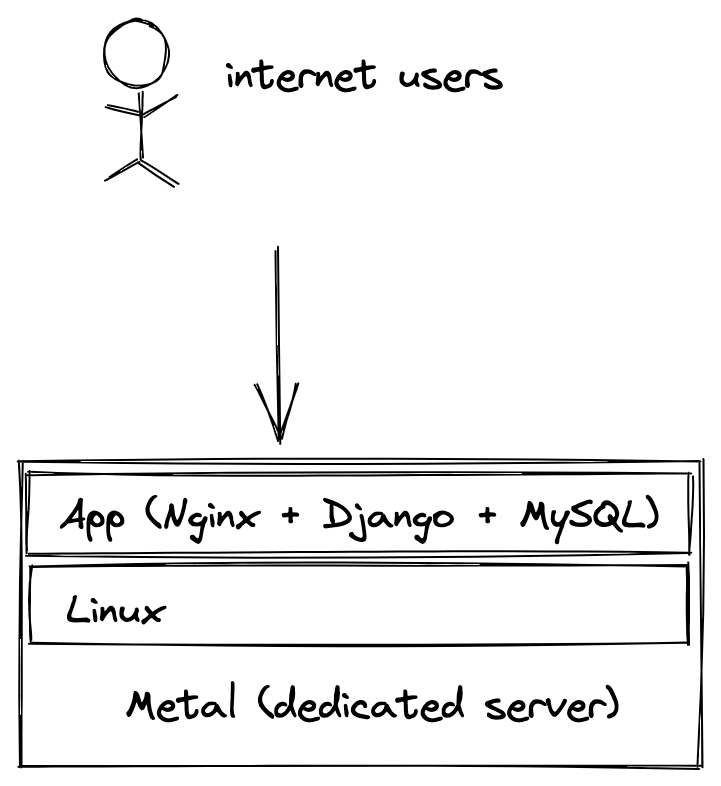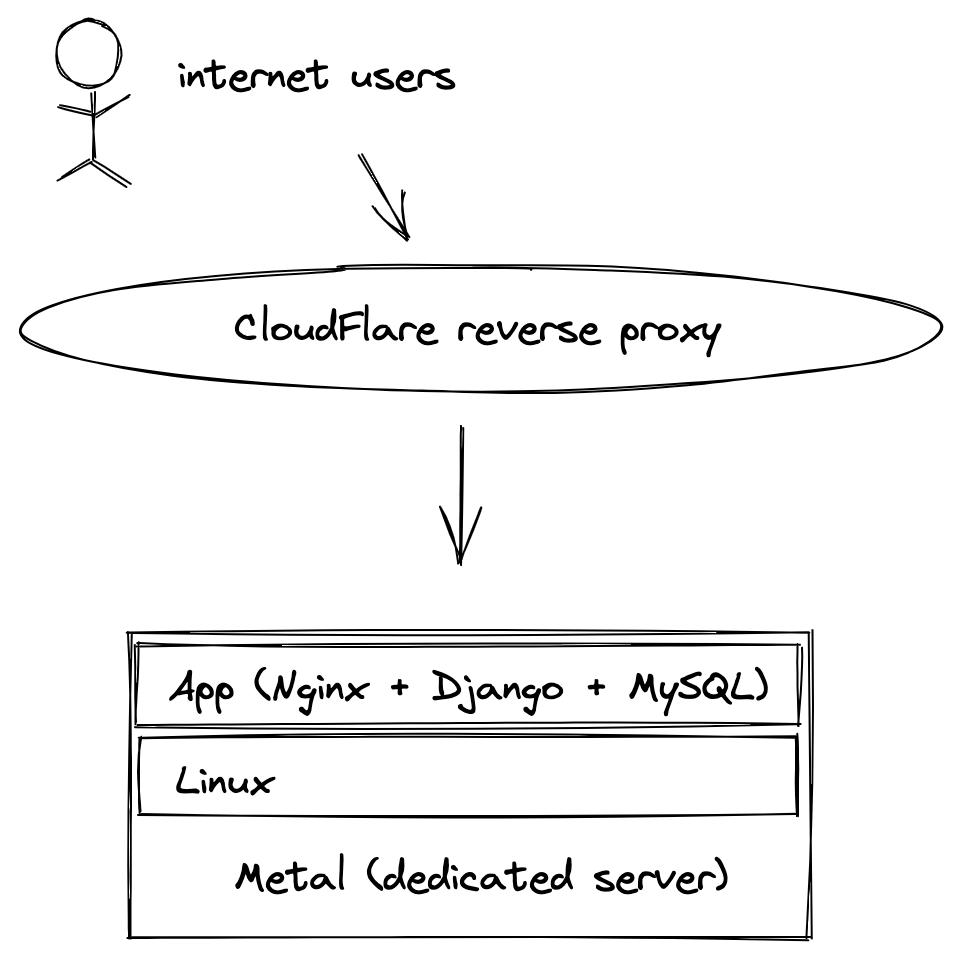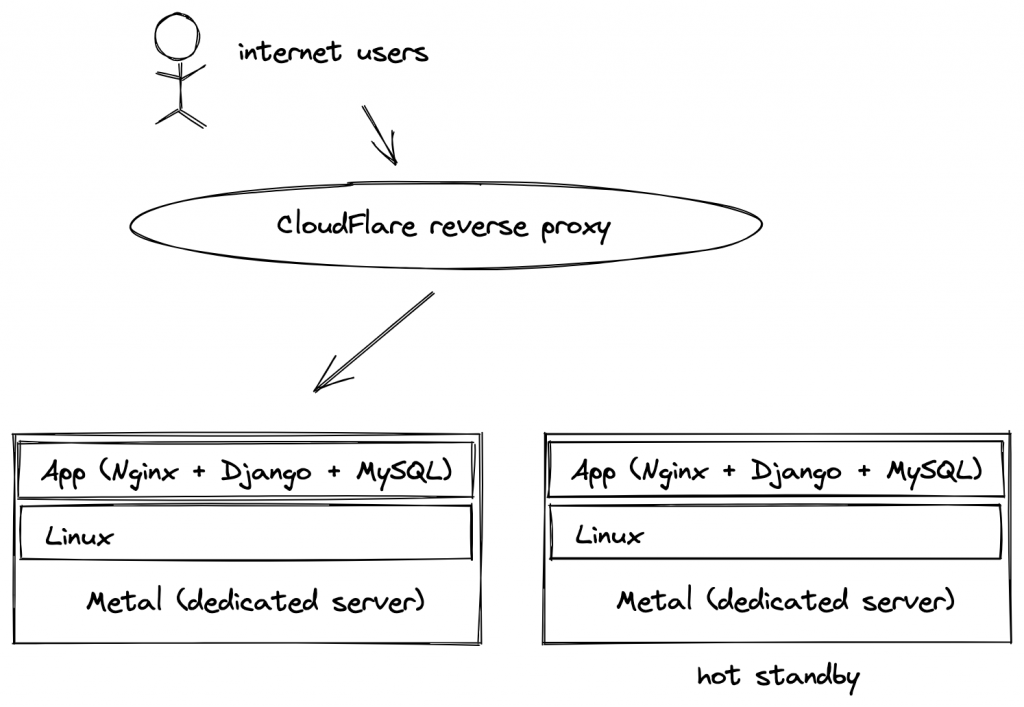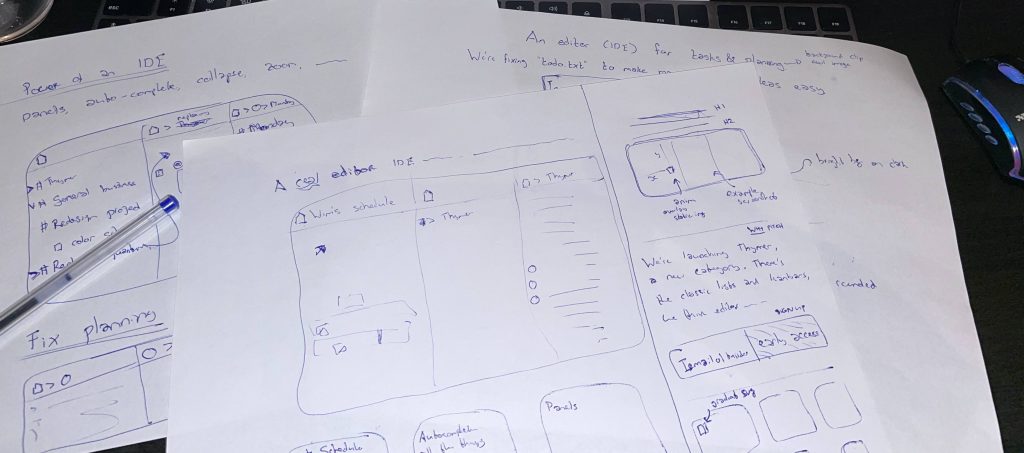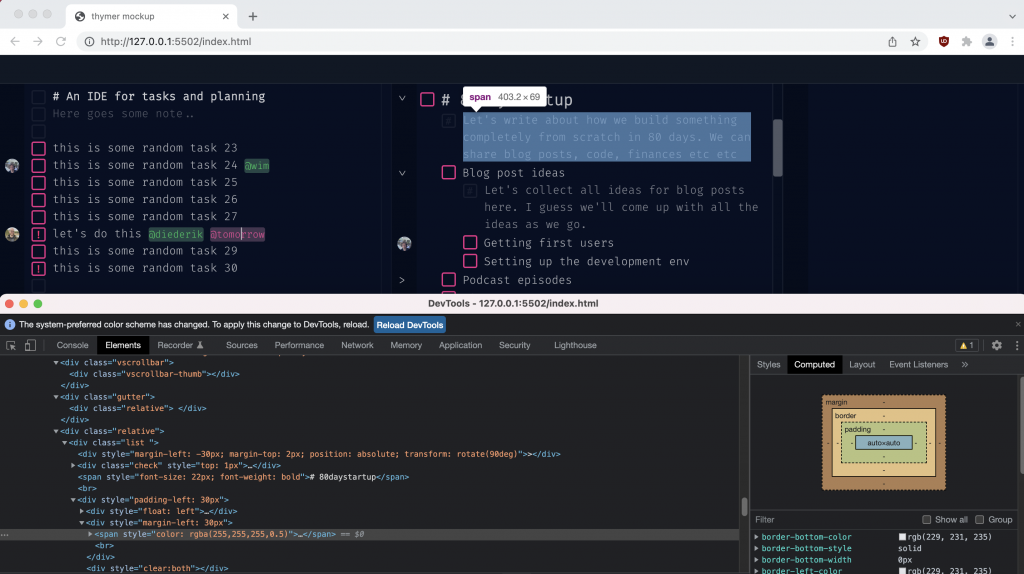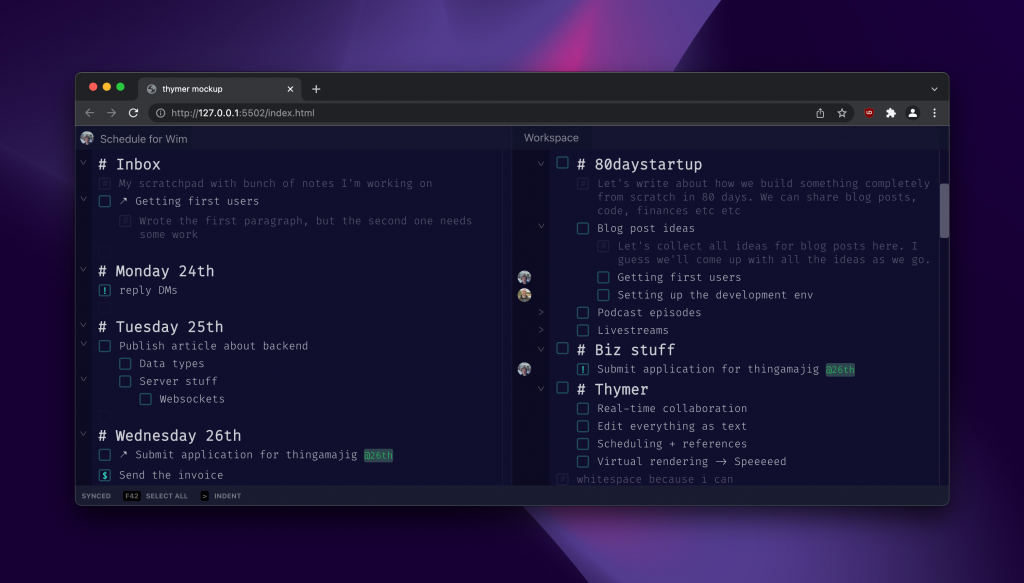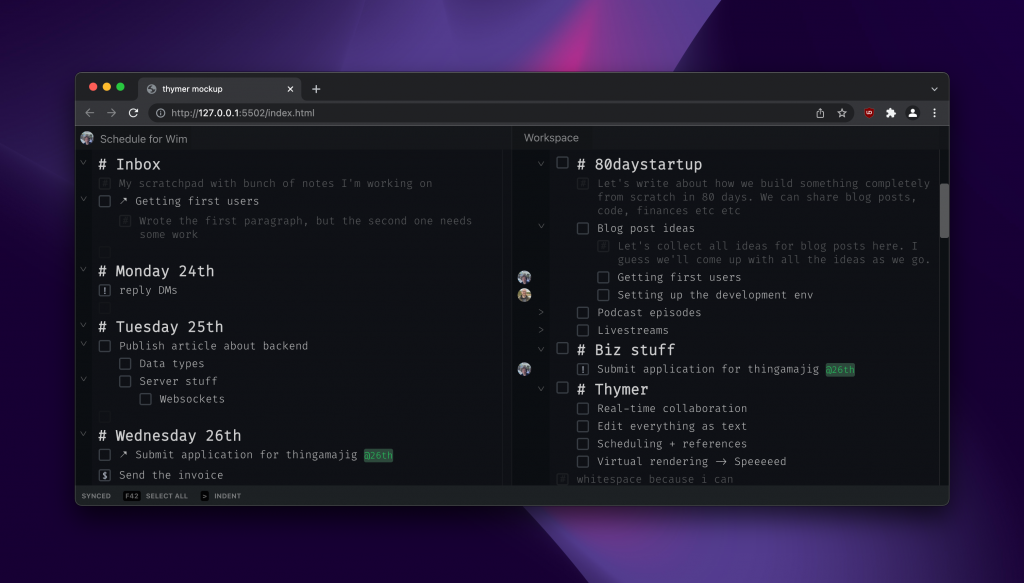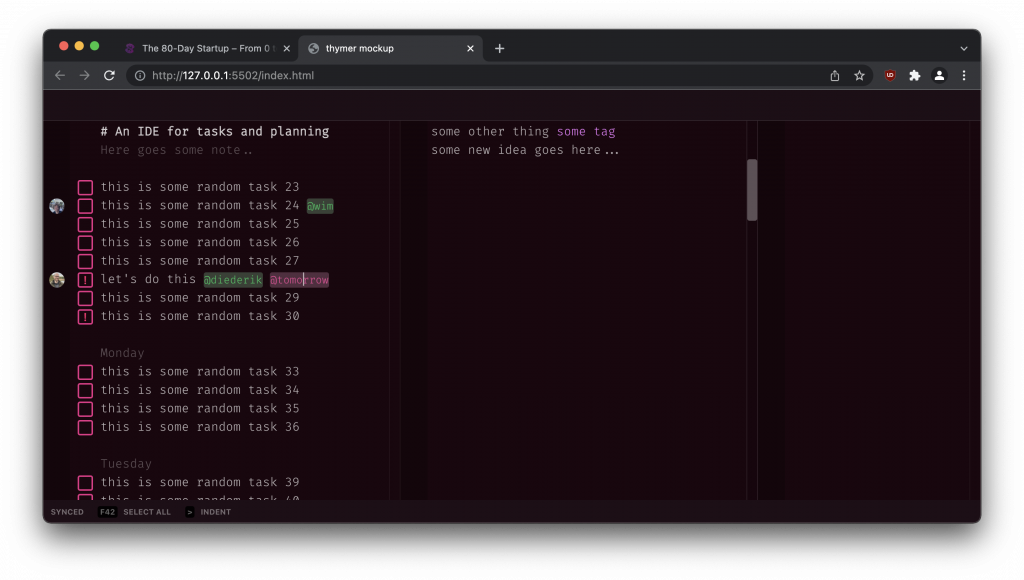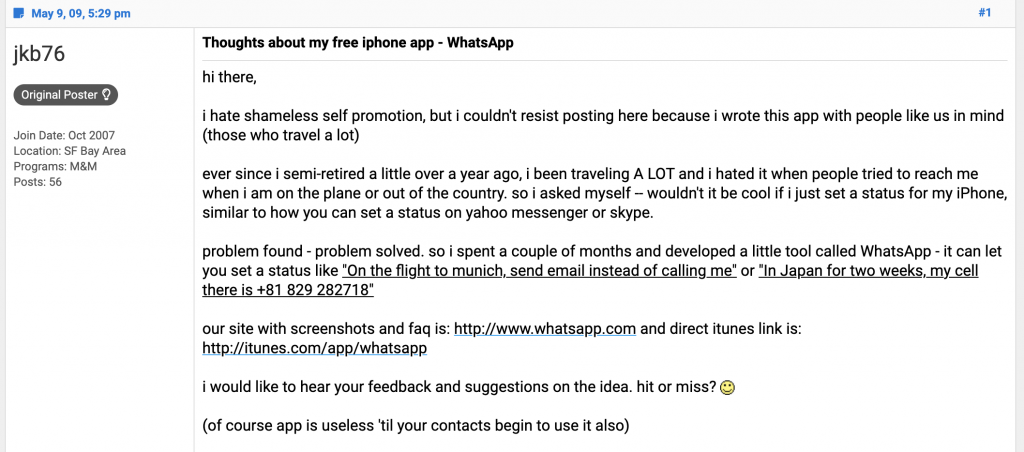As I’m working on the first landing page version for Thymer, I thought I’d write a bit about some observations about what (not) to include.
The H1
The H1, i.e. the main title, named after the <h1> HTML element for a large title. This is the elevator pitch when you only have one floor to explain. You have 5 seconds to prevent someone from closing the browser tab. What are you doing?
You need to come up with a way to explain your product in just a few words. No need to cram all the details in one sentence, but just say what it is so someone who is in your target audience might care enough about it not to close their browser.
❌ Use fuzzy language, such as “We deliver results and synergize your business”. I have no idea what that even means. Generic things like “Work better together” or “Market faster” sound more specific (oh it’s about productivity or it’s about marketing!), but that still mostly works if you’re a big startup. Actually I’m quite sure it doesn’t work, but at a certain size it just doesn’t really matter any more what your H1 is. Be more specific than that.
✅ Use your own voice. Read the title out loud. If that sounds super awkward and you wouldn’t use that in a conversation to explain it to a friend, try picking something which sounds more… human.
A good call (to action)
The call to action or CTA is the main action you want the visitor of the page to take. Something like “start a trial” or “sign up for the mailing list”.
✅ Make it easy to find, and prevent too many distractions pointing the user somewhere else.
✅ Make it easy to do. If you just want to collect an email address for users who are interested in your product, don’t create a link “sign up” to a new page where users need to fill out a form. Add an input with a button next to it on the page and remove all the friction.
✅ Think about the simplest action you really need. If you want people to sign up for your service, don’t make it “Contact us”, let them try the service!
Answer concerns
Ideally you should answer any concerns a visitor/potential customer might have before they even have time to worry about it.
When you’ve bought something online (either a product or service) from a company you didn’t order with before, you have probably tried to do a bit of research about them. Can I trust them? Will they actually ship the product? Can I trust them with my data?
Don’t make people search for this. They will want to know the answer anyway, and if you don’t provide it, they’ll leave your site and search for it (and might not come back). Especially in a market which is as impersonal as software, it helps to know the faces behind the product.
Depending on the stage of your product, the questions users might have are different. The security features of your data center are not relevant when collecting email addresses for a prototype, but you need to include those details when you’re selling to larger companies. Think about the kind of person your visitor is. What are they thinking, what are their concerns? Answer them before they worry about it.
Bonus don’ts
Ending with a few don’ts which I’m personally not a fan of, so I’m trying to convince people to stop these 🙂
❌ Tracking! Nobody likes to be tracked. And thanks to GDPR and friends, tracking now also has a real cost (next to making your site slow!). You can simply collect some simple anonymized traffic statistics using privacy-first analytics services.
❌ Obsessive A/B testing. Related to the previous point, but if you don’t have large amounts of traffics, it’s just not needed. It won’t be statistically relevant.
❌ Cookie banners. Just make it stop! Luckily, if you don’t track, you don’t need them 🙂

